MARTIALFORCE.COM
PRESENTS
AN INTERVIEW WITH
RALPH REYES SENSEI
SEPT / 2012

Ralph Reyes A Judo Treasure
Hello this is William Rivera from MartialForce.com. Lydia and I walked into the Jaime Towers Judo Club located on Pugsley Avenue in the Bronx and discovered a treasure in the world of Judo.
We would like to thank Chris Halbal Sensei and Enrique Vargas Sensei (interviewer) for their efforts in bringing the story of Jamie Towers Judo to the Martial Force readership.
"Sensei Ralph Reyes has a legacy that will grow with every seed that I plant in this world and the next! To me he is like a second father and to this very day my love for judo is only because of my teacher, my mentor, my friend, Sensei Ralph Reyes.
If you came to Jamie Towers Judo Club you was part of a planet of champions and Sensei Reyes made sure it stayed that way. He has a way of breathing life into everyone he touches and through Jamie Towers Judo Club he touched us all. There are no exceptions, all judokas felt his spirit, and it was one of authority, love, and greatness. I will always have Sensei Ralph Reyes spirit inside of me and I will always be a proud Judoka of Jamie Towers Judo Club." By Charles Samuels Sensei
An Interview with Ralph Reyes
Standing in front of the building, you see the impressive track and field of Stevenson High School across the street. The same track where many a Judoka has jogged around on a Saturday morning in preparation for “shiai” or judo competition.
As you approach the building, you see the number, above the door: “630”. Above the number, you see the name: “Rudyard Kipling”. Appropriately named after the 19th century, English poet, famous for his children’s stories, including “The Jungle Book”.
To get into the building, you either have to wait for one of the residents to walk by and say “Going to Judo” or walk across the lawn and tap on the glass of the ground floor dojo and ask someone to let you in.
After entering, you sneak through the back of the building, past the elevators and the building’s laundry room, then underneath some exposed overhead pipes until you reach the Dojo on your left. Soon you hear the sounds of young children. You watch them get through their exercises and their Judo rolls and break falls, followed by “uchikomi” or rapid-fire Judo throwing drills and then randori, or free-style practice both tachi (stand-up) and ne-waza (grappling).
“Where’s Ralph?” I ask Sensei Anthony Mercado. “He’ll be down shortly.” Sensei Mercado, along with Sensei Cindy Calderon, Sensei Mark Valcarcel and Sensei Toure Samuels, are some of the dedicated Judo Black Belts and former students, who have returned to their roots to help the next generation of Judo players reach their physical, mental and spiritual potentials.
Sensei Ralph Reyes, or simply “Ralph” is the beloved founder and head instructor of Jamie Towers Judo Club in the Union Port section of the Bronx, New York. Using much of his own personal resources (for mats, lunch money, judo camps, tournament fees and personal car for driving students to tournaments) Reyes-Sensei has taught, trained and coached hundreds, if not thousands of low income children from the Bronx in Judo for free (nominal cost of $5 per month) since the 1970’s.
He is a:
Godan: (5th Dan) in Judo,· Kaiden in Miyama Ryu Jujutsu· Vice president of the Metropolitan Judo Association and · A nationally and internationally recognized judo referee.· A USJA / USJF selected manager / representative leading the U.S. Judo teams abroad to international tournaments.
In a world of martial artists looking for ever-growing levels of self-aggrandizement, he is one of America’s rare, selfless, humble and unsung heroes. I had the distinct honor and privilege to interview Sensei Ralph about his years of dedication and service to Judo and the children of the community.
Martialforce: How did the Jamie Towers Judo Club get started?
Sensei Ralph: In the late 1960’s, I lived in the South Bronx. My sister had recently moved to another building within the Jamie Towers complex. She spoke to one of the people at her building about organizing a self defense class. So every week I would come up to teach that class. At some point a unit opened up in this 630 building, and I moved in.
Martialforce: What was in this space before you opened the club?
Sensei Ralph: It was the building’s garbage room back then. It was a smelly, roach-infested garbage room. It took us a while, but we cleaned it up, bought some mats and started the club. Initially, all we got were neighborhood kids. Eventually, we got people from all over the Bronx and even as far north as Rockland County.
Martialforce: How did you get started in Judo?
Sensei Ralph: Every Wednesday night, I would go to the movies with a good friend of mine. One particular Wednesday night, he told me he couldn’t make it. With nothing better to do, I found out about a martial arts demonstration at Evander Child H.S. in the Bronx. I went with another couple of friends of mine. At the end of the class, they showed us how to do a simple Judo throw, I was hooked. My friends weren’t interested in continuing and felt like they had learned enough, but I really enjoyed it. Later on, I met Antonio Pereira who recently opened his school in East Tremont (the late Shinan Antonio Pereira’s Tremont School of Judo and Jujutsu on East Tremont Avenue) and I began taking Judo at his school. I was 32 years old at the time that I began Judo. Since I worked in Manhattan, I started going to a Judo club at the McBurney YMCA on 23rd Street YMCA that’s no longer there. There was a German instructor there who was very good and would throw me all over the place.
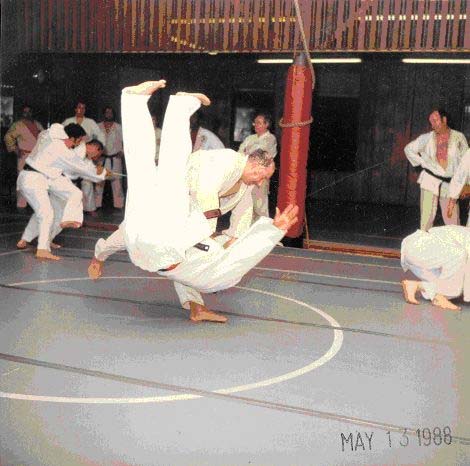
Martialforce: How old were you at the time?
Sensei Ralph: I started Judo at age 32. It didn’t come naturally to me at first. I had to work really hard at it. I sustained some injuries, including a bad shoulder injury that set me back a bit.
Martialforce: I know you taught self defense at Jamie Towers. Can you tell me how that got started?
Sensei Ralph: (Shinan) Pereira saw how hard I was working at Judo, and he approached me one day and asked me to consider taking Jujutsu. So I did. I stayed with it for 25 years. I ultimately achieved the rank of Kaiden (the highest rank in the menkyo grading system) in Miyama-Ryu jujutsu. I taught women’s self defense to the mothers of the children at the club for a time, but I always enjoyed teaching the kids the most. My partner, (Sensei William) Marquez would teach the adults’ Jujutsu and self defense class twice a week at the club.
Martialforce: Of the two martial arts, which did you enjoy more? Why did you stay with Judo for so long?
Sensei Ralph: I really enjoyed both for different reasons. Judo is a competitive sport. Judo teaches you perseverance and tenacity while it gets you into tremendous physical conditioning. Judo is as good for girls as it is for boys, because girls learn to be more aggressive and assertive, while boys learn to channel and control their energy and aggression. You can learn self-defense from Judo. For instance if someone throws a punch at you, you can use a Judo throw (Ippon Seoi-nage) to take him down. But that’s not what Judo is about. What if you miss the arm? There are no strikes in Judo; no atemi-waza, which is critical to self-defense. On the other hand, there are no competitions in Jujutsu. It’s just too dangerous. The kids enjoy going to and competing in competitions. I did Jujutsu for 25 years, and Judo for 42 and have found that Judo and Jujutsu complement each other quite well.
Martialforce:With so many distractions today, how do you keep your kids motivated?
Sensei Ralph: The biggest motivator for our kids is the opportunity to travel to the Judo tournaments. Most of our kids rarely if ever got the chance to leave the Bronx and travel. With Judo, we take road trips all over the country, and at times international trips too. I remember one trip we took to a tournament near Amish country in Pennsylvania. We stayed at a motel fashioned from some old railroad cars. There were television sets installed inside some old potbellied stoves. The kids loved it.
Martialforce: How did you learn to be a Judo coach?
Sensei Ralph: Today, Judo is much more organized than it used to be. For instance, now there is a formal class and certification process for being a Judo coach. One of our instructors, (Sensei) Anthony (Mercado) received his certificate in Judo coaching. However, when I was coming up, there were no classes you could take. You basically had on the job training. The closest thing you could get is training in becoming a Judo referee. Some of the larger national tournaments, like one held annually in Colorado, offered seminars in Judo refereeing that they would give the day before the start of the tournament. So I would always try to go to those tournaments early to attend them. I found them to be helpful, as they gave you the chance to meet and speak to other Judo coaches, and exchange ideas.
Martialforce: You mentioned how Judo has changed from an organizational perspective. How else has it changed?
Sensei Ralph: It has changed quite a bit actually. Over the years, Judo has become much more popular nationally and internationally. There are now many excellent Judo players from around the world such as former Soviet bloc countries like Ukraine and Yugoslavia. Many of these players are also very physically bigger and stronger and now all the top competitors have to deal with very strong players. There are also quite a number of Brazilian Jujutsu (BJJ) players crossing over to learn Judo to improve their standup throwing and takedown techniques. Unfortunately, as in anything, when something gets more popular, you get some people that try to take unfair advantage. For example, in Judo there is a scissors leg take down called Hasame Gaeshi. When done well, it’s a beautiful takedown. However, some players were using this technique to intentionally disable the knees of other competitors and it was banned in competition. The same thing with Morote Gari (double leg takedown). Some BJJ players were going to Judo competition and doing nothing but this one technique so they could try to get to the ground quickly where they were more comfortable. So now you cannot do this technique in competition unless it is done as a follow-up to another major throw. Today there are also many rules to prevent a Judo player from stalling or running the clock. For instance, you can’t back away from your opponent too much; you can’t keep the other player from getting a grip for too long. These rules help keep the matches faster moving and more exciting. Even the color of the Judo gi (uniform) has changed. They only used to come in one color; white. Now blue is an officially accepted gi color in most competitions except in Japan where you must still wear all white.
Martialforce:What is your opinion of BJJ and Mixed Marital Arts?
Sensei Ralph: They are all good. BJJ and Judo are very similar because they have the same roots. If you watch BJJ, it looks a lot like ne waza (Judo grappling techniques). Now you have Judo players learning BJJ to improve their ne waza (grappling), and BJJ players taking Judo to improve their standup game. Good Judo players tend to do well in MMA. For instance, I like to watch Ronda Rousey. She was a top ranked Judo player before she became an MMA champion. She trained with Jimmy Pedro’s Judo school in Massachusetts. She’s exciting to watch because she finishes all her matches by arm-bar. But most parents are concerned about putting their kids in MMA because they don’t want them to get hurt. Judo is perfect for kids because it’s a relatively safe sport with no strikes, but it is very physically demanding, great exercise while providing a foundation of techniques that can be used for self defense.
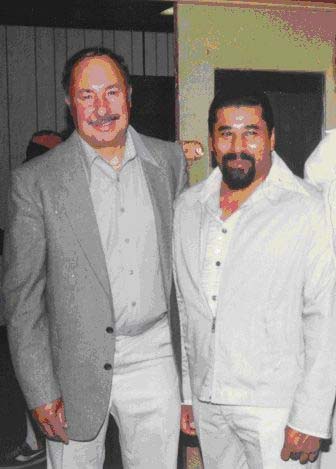
Martialforce: Shinan Pereira was a legendary and at times infamous figure in the world of Jujutsu. What was he like?
Sensei Ralph: I always liked Pereira. He had a strong personality, and was a very good businessman. But I always understood where he was coming from and I considered him to be an EXCELLENT instructor. There are a lot of instructors out there teaching different styles of Jujutsu. The problem that many of them have is that they don’t have a very strong curriculum that can be taught in a systematic way. Pereira created a system that helped ensure that when you got to a specific rank, you knew a specific set of techniques that could help save your life in a self defense situation. In Pereira’s system, you learn practical self defense on day one as a white belt.
Martialforce: You trained a number of Judo champions out of this club, including: Ed Liddie, Bronze Medalist in the Men's Extra-Lightweight Division, 1984 Summer Olympics, Ronnie Calderon, 1977 3rd Place Men's National Championships 60kg (the same year Mike Swain won in the 65kg) and more recently, Taraje Williams-Murray, 2008 Olympic USA Team. What are your thoughts about the champions you trained?
Sensei Ralph: They were all great competitors. I’m very proud of all them. They are all living proof that even a modest basement Judo club in the Bronx can produce champions. I’m also very proud of our girls. (Sensei) Cindy Calderon, and N'Jameh Samuels (now Ford) were great competitors. Jameh competed in the Judo Nationals, and even competed in Sweden. Off the mat, she was a shy, meek girl, but on the mat, she was a strong, fierce competitor. She was so determined and never quit. I remember one of the proudest days of my life was when I was in California with my girls Judo team. A group of girls from another judo school saw us walking in, pointed and said: “Hey, those are the Jamie Towers girls! They’re really good!” It gave me goosebumps.
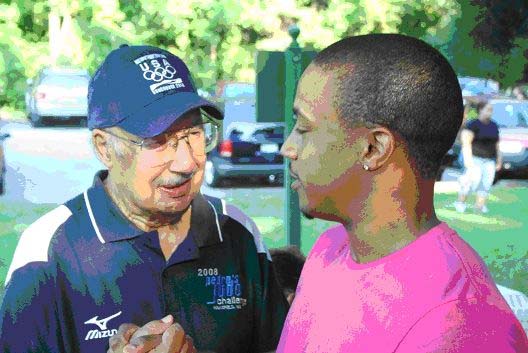
Martialforce: You have traveled all around the world as a coach, referee and USJA selected manager / representative leading the U.S. Judo teams abroad.. Are any of those trips memorable?
Sensei Ralph: I’ve had the privilege of going on a number of very memorable trips due to Judo. I once organized a team of Judo players on an international sports exhibition team visit to Cuba back in the 1970’s. There was no email, or cell phones back then, and the logistics of getting all thirty or so people from all parts of the U.S. there and back were formidable. I sent lots of letters, and made lots of phone calls. The trip turned out to be a great success. On another competition we attended in Mexico I really believed going in that we (the U.S. team) had a terrific world-class Judo team. That was, of course, until I saw the caliber of opponents we faced. They mopped the floor with us that day. That served as a valuable lesson to us in U.S. Judo circles and spurred us out of our complacency to train harder and come back stronger in future years at international Judo tournaments. Another year I led a US team from Miami over to a tournament in Argentina. Unfortunately, a couple of our younger and less mature Judo players made an obscene hand gesture to the Argentine crowd in the stands. They started to riot and almost massacred us. I saw this wave of humanity coming down from the stands and I thought we were dead. Thankfully, the Argentine committee members were able to restore order and calm the crowd. Unfortunately, the next day an article in an Argentine newspaper was published with a picture of the offending hand gesture with a headlined that read: "Que se puede decir, son Americanos!". (“What can you say, they’re AMERICANS!”). It was very embarrassing, but I kept a copy of the paper as a reminder of the experience. On a personal note, I really enjoyed traveling to Russia for a tournament we attended in Moscow and later Georgia back in the 80’s when they were still a part of the USSR. I wanted to take my team to see Lenin’s tomb, but had no idea how to get there. So when we got to the hotel, I asked the lady at the desk for directions. Unfortunately she spoke no English. So I tried something that would serve me well on a number of international trips; I asked her if she spoke Spanish. She was delighted to hear me speak Spanish. She had learned it in school and was really happy to have a chance to practice it after many years. She gave us directions by bus and we got to see Lenin’s tomb. Being bilingual is a big advantage. I remember traveling with the great Willy Cahill to tournaments in Japan. He had grown up in Hawaii and on one of return trips from Asia, we stopped over in Hawaii and he took me to some of his old watering holes. I also traveled to a number of tournaments in Canada and had the pleasure of meeting and getting to know the great Nicolas Gill (1992 and 2000 Canadian Olympic Medal winner). I even got the opportunity to cross through a tunnel that separated East and West Berlin when the Berlin wall was still up. My years in Judo have taken me all around the world.
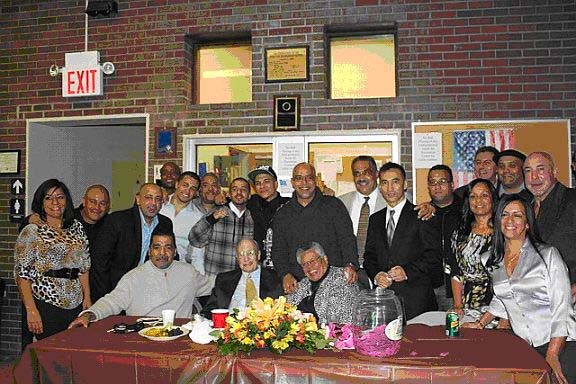
HUDSON JUDO YUDANSHAKAI ATHLETE FUND DINNER
IN HONOR OF RALPH REYES
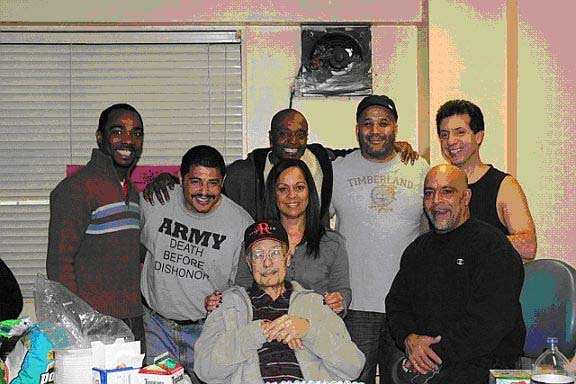
JAMIE TOWERS JUDO INSTRUCTORS
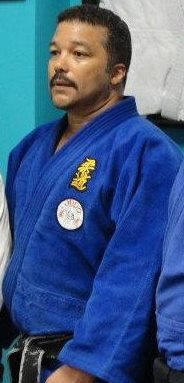
CHRIS HALBAL SENSEI
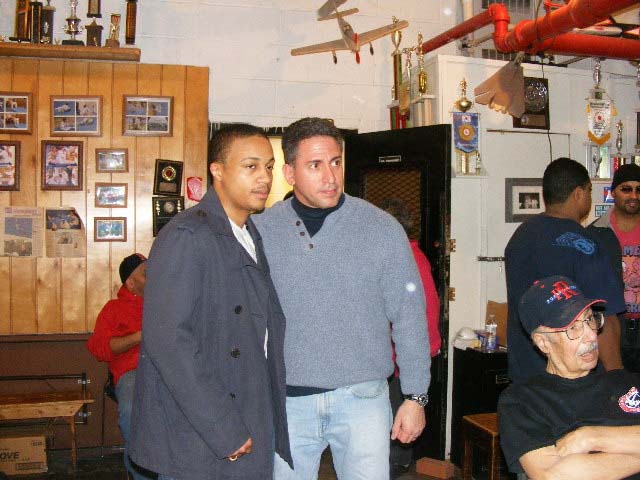
TARAJE WILLIAMS-MURRAY AND ENRIQUE VARGAS SENSEI
Martialforce: How have you been able to keep the club going all these years?
Sensei Ralph: The club is all about the kids and the parents. Every year we get new kids. Every year or two we get a great batch of parents too. They help organize and drive the kids to competition. Good parents make a big difference.
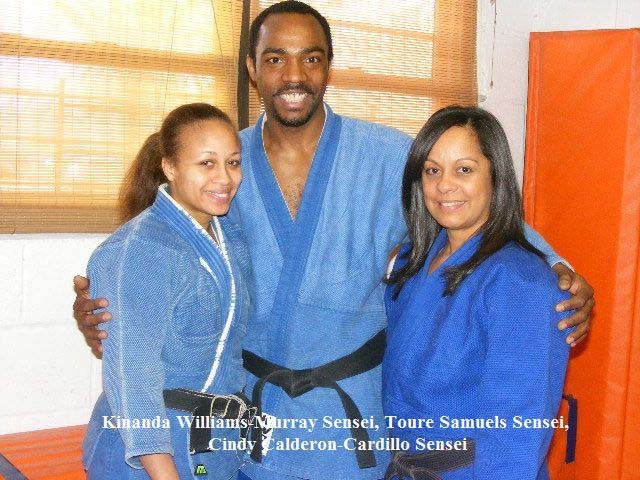
Epilogue: On Monday, May 21, 2012, the Bronx lost one of its greatest unsung heroes; Ralph Reyes to a long struggle with cancer. In addition to his 42 year career in the martial arts, Ralph served his country with honor as both a merchant marine and as a member of the U.S. Army during the Korean War. During his eulogy, his nephew Sensei Anthony Mercado, said it best; in addition to his generosity, Ralph’s greatest gift was in showing young, inner city kids that the world was much bigger than their neighborhood and with hard work and dedication, you can achieve anything. He was survived by his wife Flora, daughter Renee and two grandchildren.